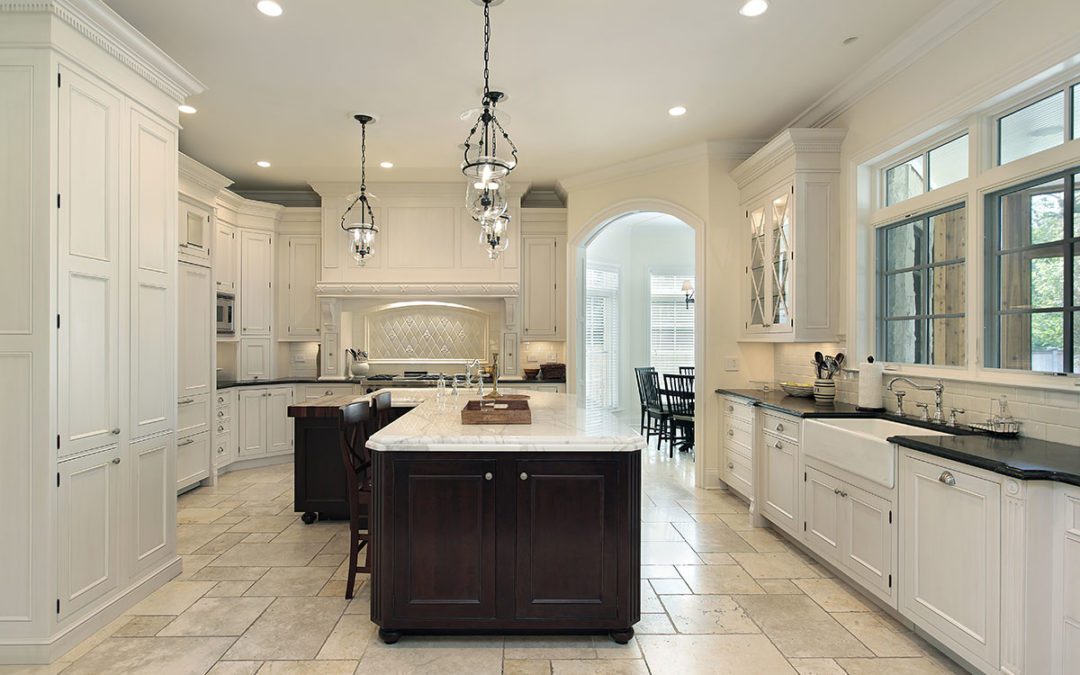The Best Kitchen Flooring for Your Needs: Pros and Cons of Popular Types
There are many options to choose from when it comes to kitchen flooring. You want to find the best type of kitchen flooring for your needs, and there are pros and cons to every kind.
This blog post will discuss the most popular types of kitchen flooring and what you need to know about them before deciding. So, whether you are looking for durability, easy cleaning, or a low-price tag, we cover it all in this post!
Hardwood Kitchen Flooring
Wood kitchen flooring is a popular option that adds warmth and beauty to your kitchen. Some homeowners opt for solid hardwood floors made of hickory, oak, walnut, or mesquite. Others choose engineered hardwood made with layers of wood.
Pros of Hardwood Kitchen Floors:
- High resale value
- Can be refinished
- It lasts a long time
- Versatile – come in many options
Cons of Hardwood Kitchen Floors:
- Scratches easily
- Can warp, buckle, or crown when exposed to moisture
- Expensive
- It can be harder to clean
Tile Kitchen Flooring
Tile kitchen floors are a popular option for many homeowners. Ceramic and porcelain tile can be printed to look like marble, hardwood, or concrete. The versatility of tile flooring is near limitless.
Pros of Tile Kitchen Floors
- Porcelain absorbs very little moisture
- Tile floors don’t scratch easily
- Tile is easy to clean
- Can be well-priced
Cons of Tile Kitchen Floors
- Slippery when wet
- Can crack or chip if a heavy object strikes it
- It can be hard on knees and backs without a cushioned mat
- Some options are costly
Laminate Kitchen Flooring
Laminate kitchen floors are a popular option for many homeowners. They are made to look like wood, stone, or tile and can be a quick, inexpensive option for a kitchen renovation.
Pros of Laminate Kitchen Floors
- It can be very inexpensive
- Resistant to scratches, dents, and stains
- Easy to install and clean
- Can withstand foot traffic well
Cons of Laminate Kitchen Floors
- Can warp with moisture
- Often requires a moisture barrier
- Requires a special cleaner
- It doesn’t last as long as other kitchen floor types
Vinyl Kitchen Flooring
Vinyl kitchen floors or luxury vinyl tile (LVT) come in three types: tile, plank, and sheet vinyl. It’s installed many ways, either with glue, peel, and stick, or click and lock. It comes in several finishes and colors.
Pros of Vinyl Kitchen Floors
- Vinyl floors won’t chip
- Luxury vinyl planks (LVT) can handle moisture
- LVT has some give, so easy on the knees
- Vinyl is budget-friendly
Cons of Vinyl Kitchen Floors
- The resale value of vinyl isn’t high
- Furniture can leave marks in the soft vinyl
- Foot traffic will be visible in time
Travertine Kitchen Flooring
Travertine kitchen floors are made of natural stone that is cut into tiles. It has a porous surface, so it needs to be sealed. Travertine comes in several colors and finishes.
Pros of Travertine Kitchen Floors
- It’s a natural stone product
- Travertine is durable – it doesn’t scratch easily
- It offers slip resistance
- With proper care, it can last a very long time
Cons of Travertine Kitchen Floors
- It can stain
- Natural stone requires special cleaning
- Travertine must be sealed every couple of years
- Can be costly
These are some of the most popular kitchen flooring options available today. There are others, and we will cover those in another post soon. Remember, it’s essential to pick a kitchen floor type that is right for your lifestyle and budget.
Need some help selecting the right floor for your kitchen? Let us know or give us a call at 443.229.6493.

